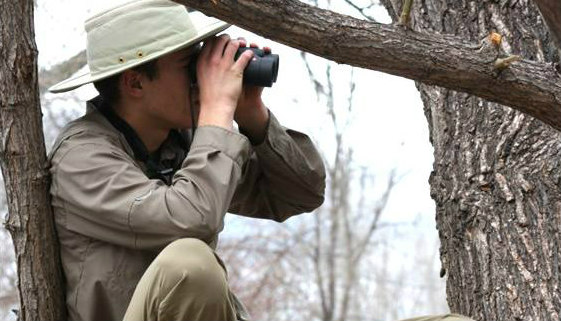 Photo ©
Karen Izdepski
Photo ©
Karen Izdepski
Teen’s 5 Tips to Connect Kids With Birds
by Alec Wyatt, teen NestWatcher
As a lifelong naturalist and a birder since grade school, adults often ask me what they can do to get other kids outside and interested in birds. During my time leading younger children in elementary schools, bird walks, and community projects, I have discovered a few ways to bring birding into children’s lives.
1. Engage their senses
The modern devices that pervade our lives—smartphones, tablets, and computers—provide quick access to unlimited information, but they typically stimulate only our visual and auditory senses. Capture kids’ attention by showing them how to appreciate the sight of a bird in nature, the sound of a song or a call, the smell of a natural environment, and the feeling of a banded bird or a feather in the hand.
2. Provide the tools
Let children immerse themselves in discovery by offering them the tools of the trade. Teach young naturalists to use binoculars or a spotting scope. Providing a notebook and a set of pencils allows children to record their own thoughts and observations and preserves their experiences for future appreciation.
3. Bridge the technology gap
Technology does not need to be a barrier between children and nature; rather, it can facilitate a transition from a “plugged-in” lifestyle to a lifetime love of birds. Smartphone applications such as the Merlin app can introduce beginners to bird identification, and soon there will even be a free NestWatch app (coming late 2016).
4. Partner with parents
Children’s community programs, nest box monitoring classes, and introductory birding courses can captivate adults, too. Consider inviting parents and guardians to accompany children on outdoor activities such as bird walks. Collaborating with adults in children’s discovery of birds ensures kids get more support in their endeavors and more time outside watching birds.
5. Give kids responsibility
For older children, having individual responsibility makes the experience of studying birds more personal and engaging. Children can study nest boxes, monitor bird feeders, or count local birds for the Great Backyard Bird Count in February each year. When their contributions to science are encouraged by adults, young birders feel that their interest is valued. When children find value in birds, we gain another generation of advocates for bird conservation.
School will be out soon! Get more resources for engaging young birders from eBird.
 Photo ©
Photo ©